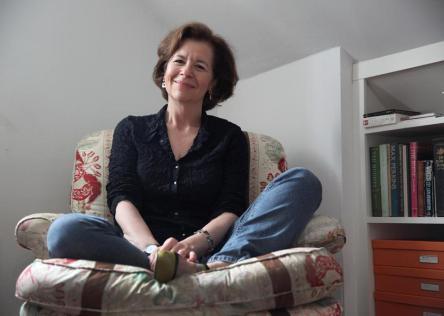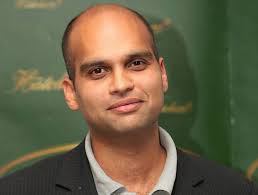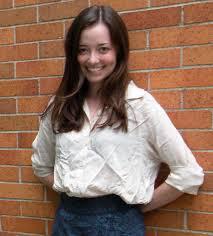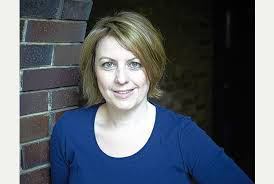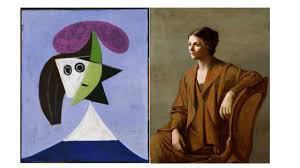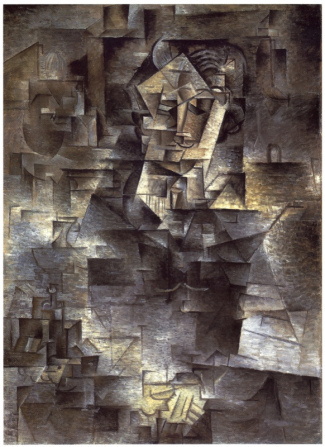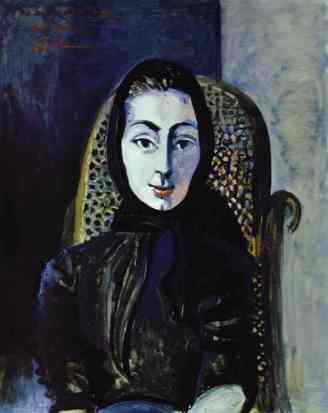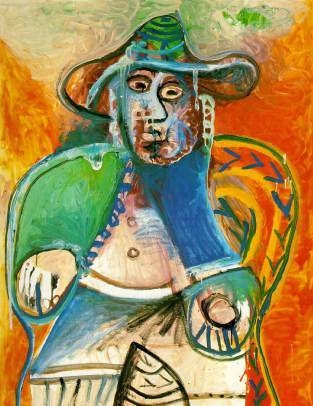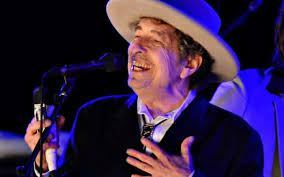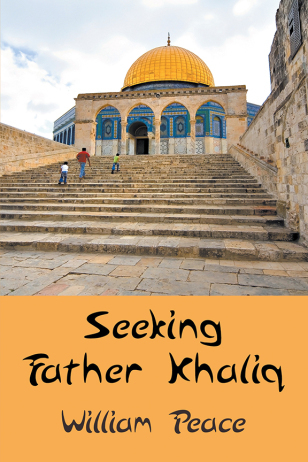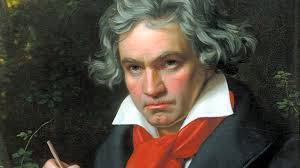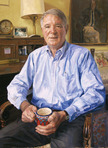William Peace's Blog, page 44
December 9, 2016
Joan Wickersham
There is an interview called “Inside the Writing Life” in my high school alumni magazine. A prominent English instructor is interviewing Joan Wickersham who graduated nearly two decades after me. Ms Wickersham has been writing most of the time since graduation; her work includes her memoir and 2008 National Book Award finalist, The Suicide Index; a book of short fiction, The News from Spain; and The Paper Anniversary, a novel. She writes a regular op-ed column for The Boston Globe; her writing has been published in prominent literary journals; and she has read her work on National Public Radio.
Joan Wickersham
Two questions and answers in this interview caught my eye.
Q: (David Weber) “You’ve sustained your output over many years. Does the problem of writer’s block seem remote to you, or have you struggled at times to give your work the priority required?”
Wickersham: “There’s a very funny little moment in a movie I once saw, where a bored, impatient woman is trying to figure out where a piece fits in a jigsaw puzzle and she finally just puts in somewhere and smacks it in with her fist. Writer’s block is a sign that what I’m doing isn’t working, and I can’t fix it by trying to ram something into a place where it doesn’t belong. It can take months to figure out that what I thought was a piece of the sky is actually a piece of the ocean, or that its a part of a different puzzle altogether. I hate writer’s block, but I’m always grateful to it in hindsight. It usually means that what I’ve been writing is somehow false, which is just as bad in fiction as nonfiction. Writer’s block slows me down and makes me throw out pages and drafts – after I’d been working on the book about my father’s suicide for nine years, I threw out a 400 page manuscript and started over – but getting stuck can be an important investment in finding the right way to tell a story.”
I like this way of thinking about writer’s block: it’s not you that are the problem; it’s the story. Sometimes, when I sit down to write, I feel cornered. I’ll look back over what I’ve written, and ask myself ‘what’s not working?’ Other times, particularly when I’m lying awake at night, I’ll start feeling uneasy about the direction of a particular novel. That feeling generally leads to surgery. When I was writing Sable Shadow & The Presence, I threw out and re-wrote whole chapters of the book, which has gone on to win eight awards.
Q: “Does a fully realized piece require its own new form, not just descriptive skill and the authority of honesty?”
Wickersham: “A lot of what I’m doing when I write is trying to figure out the inherent rules of a particular piece – the form or structure which will be most true to the story. My husband, Jay, is trained as an architect. A long time ago, when I was struggling to write about my father’s suicide, he told me that the students at the École des Beaux-Arts begin each design with a parti – an organizing principle. I found this idea of the parti exciting and liberating. I’d been wresting for years with how to organize the messy and painful story of my father’s death, and part of the problem was that the story defied any attempt at a conventional linear narrative. When I stumbled in the parti of organizing the book as an index, suddenly I had this cool, numb structure that simultaneously imposed order and ridiculed the idea of imposing order on an inherently chaotic experience”.
I never heard of the term parti before, but it makes sense. The novel I’m currently working on has an unusual organizing principle: two increasingly hostile narrators, whose identity is obscure at first, tell alternating chapters about three, very different, young protagonists over whom they have influence, but no control. The setting is present day East Africa.


December 3, 2016
Review: Selection Day
My wife bought me a copy of this novel – signed by the author! – while I was briefly in the hospital (nothing very serious) and I wanted something to read. Hospitals are a great place to read: one is always waiting for the next procedure to take place; one can make oneself comfortable; and it is not particularly noisy! She bought it because I had asked for a novel by a Man Booker shortlist author. The author, Aravind Adiga, actually won the Man Booker in 2008 for his first novel, The White Tiger. Adiga was born in Madras (new Chennai) India in 1974; after achieving his secondary school certificate, he emigrated with his family to Australia, where he graduated from high school in Sydney. He graduated, next, from Columbia University in 1997 and subsequently studied English literature at Magdelan College, Oxford. He began his business career as a financial journalist with the Financial Times, Money and Time before becoming freelance.
Aravind Adiga
Selection Day is a book focused on Indian cricket and its effect on a Mumbai slum family of two boys and their compulsive father. Radha, the older brother, expects to fulfill his father’s dream of being selected for a top Indian team. Tommy Sir, a coach/agent/promoter introduces the boys father, Mohan, to a ‘businessman’, Anand Mehta, who pays Mohan a stipend in return for a large slice of the boy’s earnings when they become famous. Unexpectedly, Manju, the younger boy, is the better batsman, scoring 497 not out in a crucial contest. Radha has a ‘weight transfer problem’ which is inhibiting his effectiveness as a batsman. Enter a rival, Javed, a cocky, rebellious, rich kid who is also a fine batsman, and who happens to be gay. Manju, at the center of the story, is his older brother’s best friend and rival, and his father’s severest but respectful critic. The younger batsman is torn between his admiration for Javed, and his reluctance to commit to an intimate relationship; and between careers in cricketing or in science.
Selection Day offers a rich mixture of conflicted, imperfect characters with whom the reader cannot help but empathize. The setting of Mumbai is drawn with natural clarity; one feels truly present. And without being a ‘book about cricket’, Selection Day, presents the culture, the mystique, the competitiveness of Indian youth critic captivatingly, without technical fussiness. The dialogue is credible, but occasionally seems too tangential to lead the reader to any firm conclusions. Perhaps, this is Mr Adiga’s intention with this novel: to make the point that, try as one might, there can never be the achievement of one’s ultimate dream.
This sense of failure seems to carry over into the two concluding parts of the novel: what happens after selection day and in the epilogue. One cannot help but be engaged by the beautiful writing, the energy, and the unfolding future in the lead up to selection day. The writing is as good, but the energy and the future have dissipated after selection day. Perhaps this novel could feel more whole, more consistent, if dreams could be scaled back rather than dispelled, and the energy and the future modestly re-directed.


November 25, 2016
Books as Therapy
The November 7th issue of Time Magazine has an article Read a Novel: it’s just what the doctor ordered, written by Sarah Begley. Ms Begley is a staff writer for Time; she writes book reviews and culture stories for the magazine. She has worked at Newsweek, The Daily Beast and Hearst Magazines. She lives in the New York City area and is a graduate of Vassar College.
Sarah Begley
She says, “the latest round of research on the benefits of literature focuses on how it improves not our IQ but our EQ.” Researchers at the New School for Social Research found a link between ‘theory of mind’ (the ability to know what a person is thinking or feeling) and reading a passage of literary fiction (as distinguished from popular fiction). Ms Begley continues, “Maria Eugenia Panero of Boston College says it is ‘hard to know whether reading literary fiction increases theory of mind or if people who naturally have a higher theory of mind are more drawn to literary fiction'”.
Ms Begley reports that a 2012 study at Ohio State University had undergraduates read different versions of a story in which a protagonist overcomes challenges (car trouble, bad weather, long lines, etc.) in order to vote. Those who read a version of the story which led them to identify strongly with the character were more likely to vote in a real election a few days later: 65% reported having voted as compared to 29% of those who read a less relatable version of the story. The story did affect the behaviour of some readers.
Bibliotherapy, which involves the prescription of novels to ‘cure life’s ailments’, is practices at the School of Life in London. Ella Berthoud, an artist, and Susan Elderkin, a novelist, are friends from their Cambridge days when they left books for each other to deal with the crisis of the week: be it romance, work stress, or whatever. Now, while they are not trained at therapists, their clients pay £100 to spend 50 minutes with them, in person or via Skype. The clients fill out a questionnaire about what they like to read and what is going on in their lives. “The bibliotherapist makes an ‘instant prescription’ at the end of the session and then sends a list of six to eight books and the reasons for the recommendation a few days later. They say the feedback is 99% positive.”
Ms Begley concludes: “The science behind reading for mental health is limited, but researchers like Panero are eager to continue exploring the benefits. ‘I think we all have some intuitive sense that we get something from fiction’, Panero says. ‘So in our field we’re interested in saying – well, what is it that we’re getting?’ Even the greatest novel cannot cure clinical depression, erase post-traumatic stress or turn an egomaniac into a self-denying saint. But it might ease a midlife crisis or provide comfort in a time of grief. As Elderkin says, it’s natural for readers to find it’satisfying when people come up with ‘proof’ of something which they’ve always felt to be true.'”
As for me, I certainly subscribe to the theories presented by Ms Begley in her article. That is why I write novels like Seeking Father Khaliq.


November 20, 2016
Review: The Last Confession of Thomas Hawkins
I bought this book – an historic novel – in a Waterstones bookstore because I had nothing to read at that moment and it looked interesting. Its author is Antonia Hodgson who grew up in Derby and studied English at the University of Leeds. Her first novel, The Devil in Marshalsea, won the 2014 Historical Dagger Award. Ms Hodgson lives in London, where she is an editor.
Antonia Hodgson
The Last Confession of Thomas Hawkins is set in a rather down-market section of Georgian London. It’s principal character, Thomas Hawkins is a ‘gentleman’ who killed a man in self-defense in prison, and throughout the story is under threat of being hung for murder. There are several intertwining plots. One involves a rather loathsome neighbour who is a member of the Society for the Reformation of Manners (a pathological moralist) and whose own morals permit him to consort with prostitutes and to beat his children. The neighbour is suddenly dead. Who killed him? Thomas, one of the children, the apprentice, the son of a notorious gang? Another plot involves King George’ mistress who is also a lady in waiting to Queen Charlotte. This Henrietta Howard (who was a real person) is a pawn in the struggle of her very evil, estranged husband to extort money from the king. The queen, also a real person, is caught in the middle and manages to capture Thomas as her rook to defeat the black knight, Charles Howard. To keep things going, there is Kitty, the pretty and libidinous girlfriend of Thomas.
There is plenty of action in this rather engaging tale which moves along at a frenetic pace with many twists and turns along the way. The characters are well-developed and likable or despicable; the dialogue is terse and credible. The Covent Garden area of London is well described in physical and moral terms, but it was difficult to picture oneself in the setting. It is not just a familiarity with the Covent Garden of today that blocked – to some extent – the credibility of the scene; it was more that at a feeling level one is somewhat remote. Having said this, one has to admire the depth of Ms Hodgson’s research into the times, the issues and the characters. There are plenty of surprises in The Last Confession of Thomas Hawkins – they certainly keep the reader engaged – but sometimes the events seemed a little too contrived. For example, the events around the ambush of Henrietta’s carriage by her husband, and the conclusion where Thomas is sent on a new mission by the queen. The cockfight and the duel of the female gladiators, while authentic and interesting, added little to the story line.
For those who like a historical novel with an anchor in truth, one with many fascinating twists and turns, with important, stand-out characters, and a good helping of mystery, The Last Confession of Thomas Hawkins is the novel for you!


November 10, 2016
Characterization
My wife and I went to see the Picasso exhibition of portraits at the National Portrait Gallery last Saturday. Until I went to the exhibition, I hadn’t been aware of the enormous range of portraits, in varying styles, Picasso had painted, and most were not included in the exhibition. I have to confess that I liked best Picasso’s paintings in the traditional style. In these paintings, one can really see Picasso’s artistic skill.
One other aspect of these paintings that impressed me was that the character of the subject was clearly identified in the picture. It was this aspect that reminded me of the writer’s task in establishing an identity in his characters. Picasso was less interested in presenting a clear likeness of his subject than in suggesting to the viewer the personality of the subject.
Let me illustrate:
Olga Khokhlova
These are two portraits of Olga Khokhlova, Picasso’s first wife and a Ukrainian ballerina whom Picasso married in 1918. The painting on the right was done early in the relationship. In it one can see an elegant, beautifully dressed woman whom Picasso admired greatly. Olga was, in fact an aristocrat who enjoyed a full social life. Picasso grew tired of the meaningless social life and returned to his private, bohemian lifestyle, eventually beginning an affair with the 17 year-old Parisian girl, Marie-Thérèse Walter. The two stayed married until Olga’s death in 1955 because Picasso refused to grant a divorce which would have given her half his assets. The portrait on the left is of Olga painted during the period of estrangement. Her head appears to be precariously attached to her body signifying, perhaps, lack of substance. Her hair is orderly and disorderly. The stylish purple hat looks rather silly. The black eyes look out toward Picasso critically. The mouth is small and a bit sad. In these two portraits one can see both a changed relationship and two different views of the same person.
Daniel-Henry Kahnweiler
Kahnweiler was a German-born art historian, art collector, and one of the premier French art dealers of the 20th century. He became prominent as an art gallery owner in Paris beginning in 1907 and he was among the first champions of cubism and Picasso. Picasso wrote of Kahnweiler “What would have become of us if Kahnweiler hadn’t had a business sense?” The figure in the painting is imposing, the head powerful, the hands relaxed but commanding. There is light that seems to emanate from the head and the hands. One has the impression of a dynamic, creative and important person. When one looks at the painting itself, which must be about a meter and a half tall, one can’t help but be impressed by the intricacy of the brushwork and the hours that Picasso worked on this portrait. It is certainly a fitting tribute to a very important influence in Picasso’s life.
Jacqueline Roque
Jacqueline Roque was Picasso’s second wife whom he married in 1961, and she outlived him. She was his favorite female subject; in 1963 he painted her portrait 160 times, and continued to paint her, in increasingly abstracted forms, until 1972. In looking at the portrait, one has a sense of a strong relationship between the subject and the painter. She is dressed in black but does not seem to be in mourning; in fact her forthright stare and raised eyebrows suggest a positive outlook. She appears to be about to disclose something important. The figure expresses confidence and femininity.
Old Man
This is a self-portrait of Picasso in a posture similar to a Rembrandt self-portrait; Picasso greatly admired Rembrandt. This was painted in the last year of Picasso’s life, and suggests a powerful figure looking out on the world. There is little motion in the picture, except for what appears to be heat on the right which dissipates toward the left. His right hand is clearly shown; the left hand is somehow disabled. His exposed upper torso conveys a sense of vitality in spite if the stasis. The face seems prepared to make an announcement. Overall, one has the impression of a painter who knows what he wants to paint and why and who cares very little for the reaction of his audience.
Picasso was highly skilled in communicating a message along with the image in his paintings, and this is particularly evident in his portraits. Artists and writers share a challenge: defining a character to the viewer/reader.


November 3, 2016
A Nobel Artist
Bob Dylan’s selection to receive the Nobel Prize for literature in 2016 has stirred up considerable controversy. People are either strongly in favor or very much opposed. The award seems to be intended for a unique poet/songwriter. The Nobel Academy said Dylan “Created new poetic expressions within the great American song tradition”. Sara Danius, the Nobel Academy’s permanent secretary, said she “hoped” the decision would not be heavily criticized. She said, “If you look back, far back, 2,500 years or so, you discover Homer and Sappho and they wrote poetic texts that were meant to be listened to. They were meant to be performed, often together with instruments. and it’s the same way with Bob Dylan.”
Here are some Dylan lyrics:
From Tangled up in Blue (Blood on the Tracks, 1975):
We always did feel the same We just saw it from a different point of view Tangled up in blue
From My Back Pages (Another Side of Bob Dylan, 1964):
“Equality”, I spoke the word as if a wedding vow Ah, I was so much older then, I’m younger than that now
From Lay Lady Lay (Nashville Skyline. 1969:
Lay, lady, lay, lay across my big brass bed Whatever colors you have in your mind I’ll show them to you and you’ll see them shine
From Sad Eyed Lady of the Lowlands (Blonde on Blonde, 1966)
With your mercury mouth in the missionary times And your eyes like smoke and your prayers like rhymes And your silver cross and your your voice like chimes Oh, who do they think could bury you?
Bob Dylan
Objections surfaced quickly all over the world. One commentator labeled the selection, “an ill-conceived nostalgia award.” Another said it insulted “ten thousand fine writers” who could have won the award in his place. Fiammetta Rocco, manager of the Man Booker International Prize and culture editor of The Economist, said, “It’s a gimmick. With all the extraordinary fiction that is being written all over the world, by writers whose lives are in danger and who could to some degree be protected by a Nobel Prize, why do this? Bob Dylan doesn’t need it. He is an old white man who is rich, famous, and physically safe”.
But, Professor Seamus Perry, head of the English faculty at Oxford University, said, “Dylan winning the Nobel was always the thing you thought should happen in a reasonable world but still seemed quite unimaginable in this one. He is, more than any other, the poet of our times, as Tennyson was of his, representative yet wholly individual, humane, angry, funny, and tender by turn; really, wholly himself, one of the greats.” Salman Rushdie said it was a “great choice” and the Dylan is “the brilliant inheritor of the bardic tradition”.
Edna Gundersen’s article, resulting from a recent interview of Dylan, appeared in last Saturday’s Daily Telegraph. In the interview, Dylan says that the award was, “amazing, incredible. Who ever dreams of something like that?” And that he intends to attend the awards ceremony in Stockholm “if it’s at all possible.” She says: “In interviews over the years, the famously unpredictable Dylan has been by turns combative, amiable, taciturn, philosophical, charismatic, caustic and cryptic. He has seemed, most of all, on being fiercely private and frustratingly unknowable. His apparent toying with the Noble committee cannot be said to have come entirely out of the blue.” When asked whether he could have just taken the calls from the Noble Committee, he says, “Well, I’m right here”, as if it was just a matter of the committee dialing the right number. Ms Gundersen says: “As a painter, writer, film-maker, actor and disc-jockey, Dylan plainly sees no limitations to artistic expression.” I think one should add ‘musician’ and ‘sculptor’ to that list.
As for me, I think the award is a great choice. It recognizes a man of extraordinary talent, who speaks for the times. Is it a ‘gimmick’? No. I would call it a ‘departure from the norm’ which is sometimes necessary to breathe new life into an old process. What about the ‘ten thousand other writers’? Would selecting one of the ten thousand have satisfied the other nine thousand nine hundred and ninety-nine? I don’t think so; it would, if anything, have intensified their sense of entitlement. What about the writers whose lives are in danger and who could be ‘protected by a Noble Prize’? Is it the function of a Nobel Prize for Literature to protect writers? I don’t think so. There will always be writers who are hated by their governments. God bless these writers! Bravo, Nobel Committee!


October 28, 2016
Promotion
Now that I have a new novel out, it’s time to think about promoting it, right?
Actually, one has to think about promoting a novel before one starts writing it. Probably, the first question to ask is: who’s going to read it?
Let me give you a summary of my experience using various promotion channels. And I should confess that while I have a marketing background, I would much rather write than promote (because I think I’m better at writing than at selling and I enjoy writing more)
Press Release: My publisher writes a draft press release which I edit and it goes out to ‘thousands of libraries, book shops, media outlets’. Fortunately, it’s in an electronic form, so that no trees are actually killed (not even from recipients printing it out, which, as far as I know, has never happened).
Website: I have a website (www.williampeace.net), which I share with the publisher. At the moment, I’m waiting for the publisher’s IT guru to add Seeking Father Khaliq. Then, I’ll ask my IT handyman to add some real content. Essential? Yes. Has it sold any books? Doubtful.
Blog: Here we are! For me the main value of a blog is the work I have to do each week – other than writing – to prepare something which might be stimulating. And, I very much enjoy it when someone responds!
Twitter: Pass. Unless you’re a big name author and people want to know what you had for breakfast, I doubt that 140 characters per day sells many books.
Goodreads & Amazon Author Pages: Yes. They even run my blog down the side – as does my website.
Facebook Pages: Yes. I have a personal page, an author’s page and there’s a page for each of my books.
Advertising: Yes. Five of my books have regular advertisements on Goodreads. What I’ve got to do now is to revisit the advertising copy on some of the ads because the click-through-rate is too low. There have been quite a few books added to readers’ lists. Currently, I’m running a Facebook ad which covers the commuter homebase north of Manhattan. Lots and lots of ‘Likes’. Sales? Hard to say. The Facebook ads are expensive.
Giveaways: I ran a giveaway on Goodreads last year. Over one hundred people applied for ten books. After I sent the books out, I got one semi-literate review, instead of the ten I should have received. Don’t they do book reports in school any more?
Brick & Mortar Bookshops: Bookshops will carry books only if they are bought on a sale or return basis. That way, they get left with zero unsold stock. My publisher offers a ‘deal’ where the author underwrites the cost of returns from bookshops. When I pointed out that since they had something to gain from sales to bookshops, they ought to participate in the underwriting. Their response was to put a cap on my potential exposure. I signed up to that for a while, but there was no evidence that any bookshops bought copies. I’ve offered to carry the stock for several independent bookshops in London, but there was no interest in even a sample book. I approached Barnes & Noble about carrying one or two of my books in selected stores. No interest. With (very) rare exceptions brick and mortar bookshops buy from traditional publishers. Period.
Book Signings: A few years ago, my publisher would arrange book signings. In fact I was offered a signing at a rural bookshop in Maine, but I had to buy and carry 50 books with me. This service has since been discontinued. In fact, I have the impression that book signings work only for non-fiction accounts of a juicy scandal written by one of the perpetrators.
Awards: This is a semi-major project area for me. I’ve stopped submitting to the outfits that run multiple contests with unidentified judges. That still leaves about one contest per month, and I’m getting recognition about half the time. (No serious money yet.)
Reviews: You may know that Amazon has cracked down on pay-for-review outfits: they won’t let them post reviews. This makes some sense in that the money might be trying to buy a good review. The problem is that there isn’t enough review capacity in the industry. Willing and educated reviewers tend to flock to the best sellers. Bloggers who offer reviews typically have a very long waiting list. Reciprocal reviewing services are an option, but, to be fair, one has to reading some marginally interesting stuff to win a hasty review. Recently, I tried a different approach to the literary editors of large newspapers. I had previously sent a few of them samples of my latest book. No response. I identified about fifteen literary editors of major newspapers in the UK, US and Canada, and I sent them carefully crafted messages about Seeking Father Khaliq, inviting them to review it. There were two polite ‘no thank you’s.
So let me end with a fantastic offer! If any of my readers would like to receive a free copy of Seeking Father Khaliq with an obligation to publish a brief, learned review, please email me at bill(at)williampeace(dot)net!


October 20, 2016
New Novel
My latest novel, Seeking Father Khaliq, has just been published.
Seeking Father Khaliq is a modern allegory about one man’s search for spiritual fulfillment. Set in the Middle East, philosophy professor Kareem al-Busiri teaches at a prestigious Egyptian university.
The professor is persuaded by a Princess Basheera to find Father Khaliq for her. From time-to-time, the professor wonders whether the princess is real or did he imagine her? In the search, he undertakes important pilgrimages: the Hajj, Arba’een (the huge Shia pilgrimage to Karbala in Iraq), to Medina (the Prophet’s tomb), to Jerusalem and Rome. He falls in love with a colleague who was his late wife’s best friend, and who like his late wife and daughter is a Coptic Christian. He attempts to manage mortal conflicts of values and ideology between his two sons. One son is an Egyptian army officer; the other is a lawyer who is secretly providing money and arms to the terrorist insurgency in the Sinai. Classical Arabic philosophy is woven into the narrative to support certain viewpoints.
The back cover continues:
Carefully researched and constructed, this dynamic story reflects the current religious, political, and social turmoil of the region.
Seeking Father Khaliq is unique in its Middle East setting, and its focus on Islam, as well as elements of Christianity and Judaism. The use of the jihadist conflict in Egypt as a surrogate for larger regional conflicts, the religious pilgrimages, and the resolution of inter-faith marriage issues are also highlighted.
There are two reviews, so far:
E. Lund for Phi Beta Kappa Reviews said, in part:
” . . . Author William Peace has woven a compelling narrative that explores the issues of religion, politics and social change, all while avoiding the pitfalls of becoming a treatise. Instead, “Seeking Father Khaliq” is a moving study of a family caught up in the volatile turmoil of the times, and a father who finds that moving closer to God is a way to navigate forward. Beautifully written with vivid depictions of religious pilgrimages, the book also delivers three dimensional characters fully realized and equally empathetic. Highly recommended for those who want to know more about this important part of the world, but as much to be enjoyed simply on its narrative merits. “
Deborah Lloyd for Reader’s Favorite said, in part:
“. . . The author’s writing style is clear and concise. The account is thought-provoking and fascinating; the reader will be forever changed. This is a much-needed book during these difficult, challenging times in our modern world.”
I will just add that this book was a great pleasure to write. I spent at least as much time on the internet researching as I did in the actual writing. It took two years to write – about half my normal pace. I also feel that my original idea for the book blossomed very nicely: one man’s search for God, Middle East setting, key character a philosophy professor, told in the first person, two sons on opposite sides of the regional divide.
I hope you enjoy it!


October 13, 2016
Composition: Music and Prose
Last night, I heard, for the first time, evidence of the shared skills of composers and authors. My wife and I went to a Royal Philharmonic Orchestra concert which featured Wagner’s Tannháuser Overture, Chopin’s Piano Concerto No. 2, and Beethoven’s Symphony No. 4. Pierre Vallet was the conductor and Elizabeth Sombart was the pianist. For me the music got better as the evening progressed. I should explain that I am no music critic; I never played an instrument, and I can’t really read music, although I sang first tenor and then baritone in two different small singing groups in high school and college.
The Wagner piece was enjoyable, but it didn’t really engage me. I kept thinking of Nietzsche’s criticism of Wagner: that he became an insufferable egotist. Elizabeth Sombart’s recital of Chopin was very impressive. I sat there and thought: ‘How wonderful it must be to be able to play like that!’ And Chopin’s music was lovely. But it was Beethoven’s Fourth that really caught my attention. I’ve heard it played at least a dozen times before, but, until last night, never by a live orchestra.
Composer of the Fourth Symphony
The music was captivating, and I watched the musicians play with what seemed like gusto. I began to think about the composition of the music to which I was listening This was a very clever composer: he keeps his audience fully engaged. And I began to identify aspects of the music that I felt bore similarities to the composition of good prose.
The piece has a unity to it. It was clearly the work of one composer: it was telling one musical story in four movements. Each movement shared musical themes and techniques with the others, but one felt a progression in the movements. At times, I have felt that a particular piece of classical music could have been serially composed by two or more people.
There was plenty of emotion. Sometimes a flute and first violins would pick out a sweet and gentle theme. At other times the timpani, brass and eight basses would thunder out in rage. There was love, there was anger, there was joy and wonder.
There was plenty of suspense. The first movement begins with a dark, gloomy section: What is this about? But gradually it gives way to a bright, cheerful theme: Will this continue? Whenever a new theme was introduced, it would begin to tease, and one would wonder what is coming? The techniques for generating suspense varied: Pianissimo building to Forte, or the other way ’round, or themes evolving in variations; or sudden shifts in the instruments; or instruments playing ascending scales.
There was a lot of conversation. For, example the violins would start a theme which would be picked up and changed by the cellos; the violins would respond with the changed theme and change it further.
There were changes in pace. Sometimes the music was slowly deliberate: in no hurry; at other times, it was in a sensational rush, particularly in the fourth movement.
With this insight, perhaps I will enjoy classical music more than I have in the past. And I have always enjoyed going to concerts.


October 6, 2016
A Writer Unmasked
You may have read that the New York Review of Books’ investigative reporter Claudio Gatti has unmasked best-selling novelist Elena Ferrante.
Perhaps it is best to quote from an article in The New Yorker by Alexandra Schwartz:
“The news that the true identity of the writer Elena Ferrante has, allegedly, been uncovered was published on the blog of The New York Review of Booksat 1 a.m. on Sunday—the Internet’s witching hour, when salacious tidbits are unloaded online to greet the unsuspecting citizens of Twitter bright and early in the morning. It was met with widespread consternation from Ferrante fans. People are pissed. The sleuth, an Italian journalist named Claudio Gatti, has gone beyond the efforts of previous Ferrante truthers, who have generally tried either to compare the biographies of various Italian writers with what is known or inferred about Ferrante’s life or to match their literary style with hers, and used forensic accounting to uncover a money trail that, he believes, leads straight to the source. The process has taken him months. If only someone had got him interested in Trump’s tax returns during the primaries, just think where we might be today.
“I hate to do it, but in the interest of clarity, here, briefly, is what Gatti claims. Ferrante, he says, is Anita Raja, a translator who lives in Rome with her husband, the Neapolitan writer Domenico Starnone. For many years, Raja has translated books from the German for Edizione E/O, the publishing house that puts out Ferrante’s work. Gatti says that payments from the publisher to Raja “have increased dramatically in recent years,” in line with the increase in revenues that Edizioni E/O has enjoyed as Ferrante has become an international literary star, and thus “appear to make her the overwhelming beneficiary of Ferrante’s success.” (He obtained information about Edizioni E/O’s revenue and Raja’s income from an anonymous source.)
“To this evidence Gatti adds the further proof of Raja and Starnone’s real-estate dealings. In 2000, the year that Ferrante’s first novel was made into a movie in Italy, Raja bought a seven-room apartment in what Gatti assures us is an expensive neighborhood in Rome. In 2001, she bought a country house in Tuscany. This past June, Gatti reports, Starnone bought an eleven-room apartment “on the top floor of an elegant pre-war building in one of the most beautiful streets in Rome,” not far from Raja’s apartment. Gatti, after making a brief foray into Italian tax law to explain his suspicion that it is Raja who has purchased the new apartment in Starnone’s name, reminds us that most translators do not earn enough from the sweat of their labor to be able to afford such nice things. Raja has risen suspiciously above her station.
“The part of Gatti’s claim that has unavoidable meaning for readers is that Anita Raja’s biography does not at all correspond to that of Elena Ferrante as gleaned from her novels, or as described in “Frantumaglia,” a work of autobiographical fragments that first appeared in Italy more than a decade ago and which will be published in the United States on November 1st. In that book, Ferrante writes that she grew up in Naples, the daughter of a local seamstress. Raja’s mother, Golda Frieda Petzenbaum, worked as a teacher, and was born in Worms, Germany, into a Polish Jewish family that fled to Italy in 1937. She married a Neapolitan magistrate, but the family moved to Rome, in 1956, when Raja was three. If Raja is Elena Ferrante, that would mean, among many other things, that she has no firsthand knowledge of the postwar Naples milieu that she evokes with such fiercely unsentimental strokes, the oppressive rione on the city’s outskirts that anchors the Neapolitan novels and gives them their extraordinary texture of lived truth.”
Ferrante, through her publisher had said: “I have my private life and as far as my public life goes I am fully represented by my books. . . Thanks to this decision, I have gained a space of my own, a space that is free. . . . To relinquish it would be very painful.” For me, the appalling aspect of all this is the character of Gatti. He seems to be motivated entirely by selfish interests: enhancing his career, making money, putting himself in the limelight while injuring the interests of another person. His allegations that Raja (if indeed it is she) was engaging in a kind of publicity stunt, and that eventually she would be found out. He seemed to imply that she was asking for it.
I sincerely hope that Gatti will continue to be showered with approbation and that other ‘investigative journalists’ will not try to follow in his footsteps. Life is about making choices; it is not about frustrating other people’s choices.



